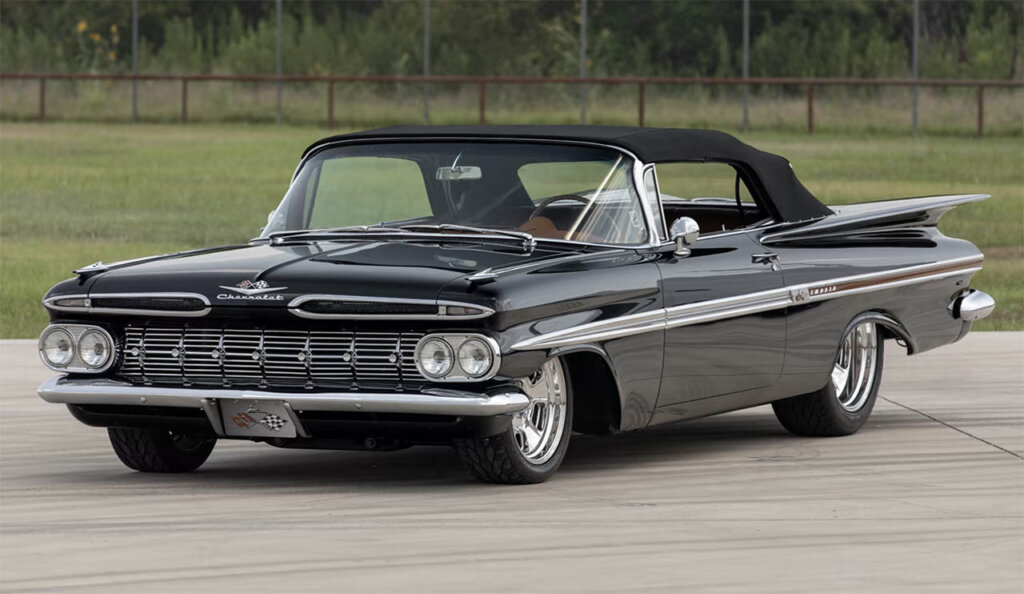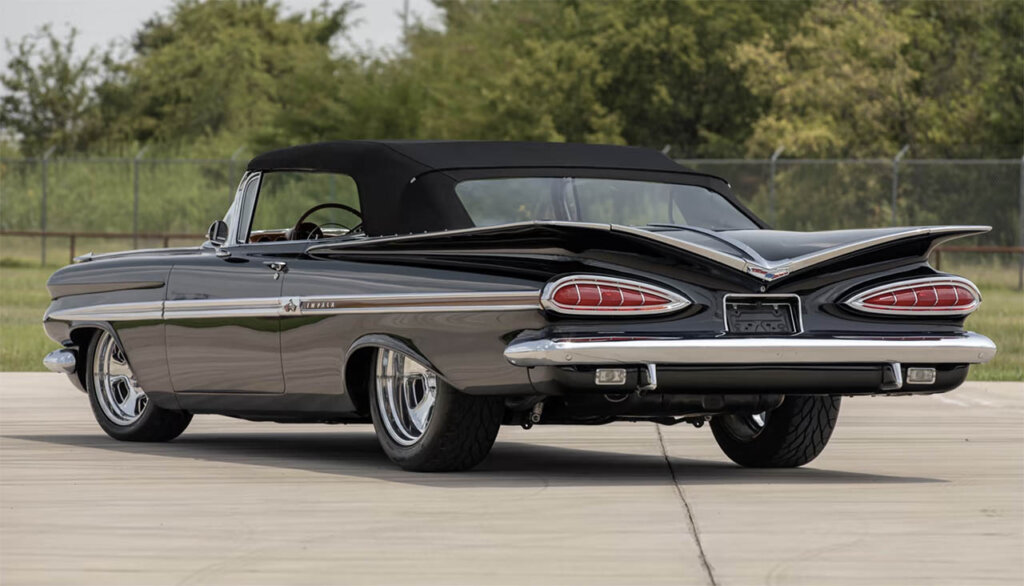Second Generation | 1959–1960

Source: Mecum Auctions
| Trim | Production | Engine | Power | Transmission | Drivetrain |
| 2nd Gen | 1959 – 1960 | 3.8 – 3.9L Inline-6 | 108 – 140 HP / 105 – 141 PS / 80 – 104 kW | 3/4-Speed Manual 2/3-Speed Automatic | RWD |
| 2nd Gen | 1959 – 1960 | 4.6L V8 | 185 – 290 HP / 187 – 294 PS / 138 – 220 kW | 3/4-Speed Manual 2/3-Speed Automatic | RWD |
| 2nd Gen | 1959 – 1960 | 5.7L V8 | 335 – 350 HP / 339 – 354 PS / 250 – 260 kW | 3/4-Speed Manual 2/3-Speed Automatic | RWD |
By 1959, the Chevrolet Impala underwent a redesign as part of a cost-saving measure by General Motors. The new design involved sharing bodyshells with lower-end Buicks, Oldsmobiles, and Pontiacs. With the introduction of a new X-frame chassis, the Impala saw a lower roofline by 3 inches, increased body width by 2 inches, a longer wheelbase by 1-1/2 inches, and a higher curb weight. The tailfins were flattened and extended outward instead of upward, while the taillights featured a large “teardrop” design. Nonfunctional front air intake scoops were added above the grille.

The Impala lineup expanded to include a separate series, featuring four-door hardtop and sedan models in addition to the existing two-door Sport Coupe and convertible, as well as a five-door station wagon. The standard engine was an I6, while the base V8 remained the 283 cu in with 185 hp. Optional engine choices included a 283 cu in with 290 hp and a 348 cu in V8 with up to 335 hp. The 1960 Impala models reintroduced three round taillights on each side, along with a white band running along the rear fenders. Various versions of the 283 cu in and 348 cu in V8 engines were offered, with power outputs ranging from 170 to 350 hp. Cruise control was a new option, and production reached 490,000 units.

Source: Mecum Auctions











